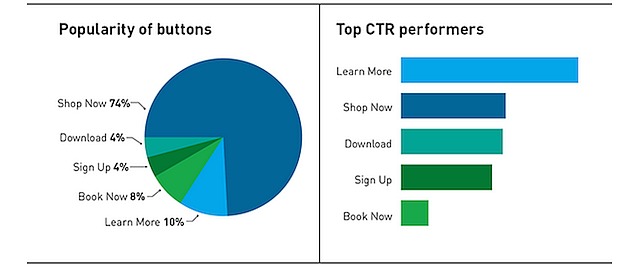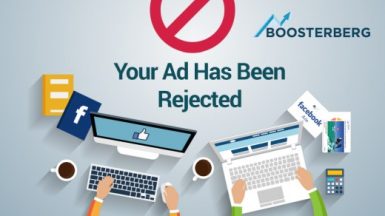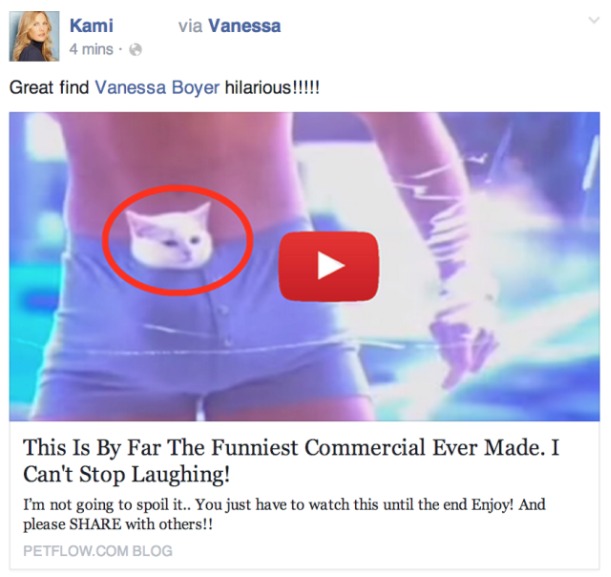Facebook, as the most famous and most used social network worldwide with 1.71 billion monthly active users (September 2016), tends to protect its users from irrelevant and inappropriate content that could be distributed via paid advertising. Because of this fact, each new Facebook ad needs to be approved before it can go live – this can take from several minutes up to 24 hours.
There are many reasons why Facebook can disapprove your ad. Sometimes, and quite frequently as well, despite the ad not being any violent or harmful. Thus, before you start creating Facebook ads, we strongly recommend you study (or at least briefly scroll through) Facebook advertising guidelines.
In this article, we will have a look at 10 most frequent reasons why your ad could not be approved by Facebook.
What Are Those 10 Reasons?
1. Too Much Text in Image
This is probably the most frequent reason which almost every advertiser or marketer is familiar with. The rule is that the image should not contain more than 20% of text. Recently, there has been a change in applying this rule by Facebook. Before, an ad with more than 20% of text would not be approved at all. Now, Facebook can approve such an ad but you should be prepared that the reach of these ads can significantly be lower.
If you want to be sure that everything is all right, you can use this handy tool to check text in images (try it in Firefox if Chrome does not work) before posting the Facebook ad. There are 4 possible results of assessing this image Facebook Ad (Facebook Image text ratings):
- 1. Image text: OK – Your advert will run normally
- 2. Image text: Low – Your advert’s reach may be slightly lower
- 3. Image text: Medium – Your advert’s reach may be much lower
- 4. Image text: High – Your advert may not run.
This Curaprox ad would have the following result of assessment using the Facebook Text Overlay Tool:

2. Using Facebook Brand in Ads
Using Facebook brand in advertising, in any form (text or image), is strictly regulated. There can be numerous problems with it such as:
- • Word inflection, which can happen in foreign languages
- • Changing the logo colour
- • Adjusting/changing the logo design
- • Application of Facebook logo in your image (positioning etc.)
Of course, your Facebook Ad cannot imply partnership with Facebook or sponsoring in any way. You can find important Facebook brand guidelines here.
3. Using Fake Call to Action Buttons
Facebook gives you an option to use several functional call to action (CTA) buttons, such as “Learn More” or “Apply Now”. However, sometimes people try placing so called fake buttons directly into their images, trying to act as the real CTAs. They could use texts not available from Facebook, e.g. “Buy Now” or “Play Now”, without offering any functionality.
Such Facebook Ad is misleading, because invites the user to click on the ad and imitates the functionality, but no product is being added to the basket and no video played after clicking on the ad.
All such ads will be rejected by Facebook. Anyway, there is no reason to try it, because all you would achieve is a low quality traffic to your target site. As you can see, out of the 5 available buttons, the one with the best Click Through Rate is the “Learn More” button. Thus, it is quite interesting that it is not used in more than 10% of Facebook Ads with functionality buttons.

4. Age Restricted Topics
You need to be careful when creating ads for certain types of products, such as alcohol. These tend to have age limitation from the law and they are country-dependent. In U.S., the minimum age level for alcohol consumption is 21 years, while in many European countries it is 18.
Your Facebook Ad can be rejected even if you advertise a restaurant serving alcohol, despite your ad does not promote it directly. Your ad won’t be possibly approved also in case there is any hint that the product or ad are connected to alcohol (e.g. wine bottle, full or empty wine gasses).
You can read more about ads with restricted use in the official Facebook policy.

5. Incorrect Destination URL
Another reason for your ad to be rejected. The target/landing page, where users go after clicking on your Facebook Ad, needs to fulfil several criteria as well:
- 1. Relevancy is the most basic rule. The product or service promoted in the ad needs to be in line with the content on the target landing page. If not, Facebook can reject your ad, or even worse, your ad will be approved and you will get a lot of irrelevant traffic which, as you can expect, won’t lead to conversions.
- 2. Functionality – the landing page needs to be working (obviously), so beware of mistyping the URL. Also, no malware or undesired pop up windows are to be present on the landing page.
- 3. And finally, Facebook homepage cannot be used as the landing page. Would you believe this could ever happen? But yes, this is a valid rule).
6. Too Much Capitalisation
It is not recommended using too much “CAPS LOCK” function. Optically, having the text in uppercase can be an advantage, because your ad is more appealing and cannot be so easily overlooked. Nevertheless, this ad would evoke spam by many users and at the end could be inefficient either. Instead of using “ONLY 50 TICKETS LEFT – BUY 3 GET 1 FREE NOW!” it is better to use a regular sentence case.
7. Irrelevant Content in FB Ads
As already mentioned, one of the basic rules for Facebook Ads is relevancy. This is a general requirement and all components of an ad and landing page need to be in logical connection. For example, using a picture of a lady in swimwear when promoting carpets can lead to your ad being rejected.
8. Shocking Content, Nudity, Bad Language
Facebook immediately rejects ads displaying or promoting nudity, sexual content, pictures of dead bodies etc. Be careful when preparing the copywriting and beware of swear words or racism as well.
9. Discrimination
Respecting your privacy is important for Facebook. You can target the ads according to the age, sex or ethnic of users, but you are always aiming at a group, not individual people. For this reasons, your ad texts should not be personalised but general. We will show you an example of correct an incorrect copywriting of a Facebook Ad:
- • INCORRECT – Possible rejecting: “Get in touch with single people from New Jersey, such as you are!”
- • CORRECT – “Get in touch with single people from New Jersey!”
10. Forbidden Content
You cannot advertise content that is on the list of products and services that are prohibited to be advertised. Such products include tobacco products, guns, “healh” products (fake products promising improving of health) etc. For the full list of banned content, review the Facebook Ad Policy.
Not Happy with the Decision?
And yes, Facebook can make mistakes as well. There are so many stories of people being frustrated about Facebook repeatedly rejecting their ads. If you are sure that your ad was rejected without any reason, you can contact Facebook using the Facebook Help Center. Addiotional information about how to proceed when your Facebook Ad has been rejected, can be also found on this Facebook Business Help Page.
Sources and Additional Resources
- https://www.thenextad.com/creatives/3-reasons-why-facebook-reject-your-ad/
- https://ryanshaw.me/facebook-2/never-facebook-ad-rejected/
- https://www.facebook.com/policies/ads/
- https://www.socialmediatoday.com/content/top-ten-reasons-your-facebook-ads-are-being-rejected
- https://andrewhubbard.co/facebook-ad-not-approved/
- https://www.jonloomer.com/2015/03/10/facebook-ads-rejected-account-banned/



